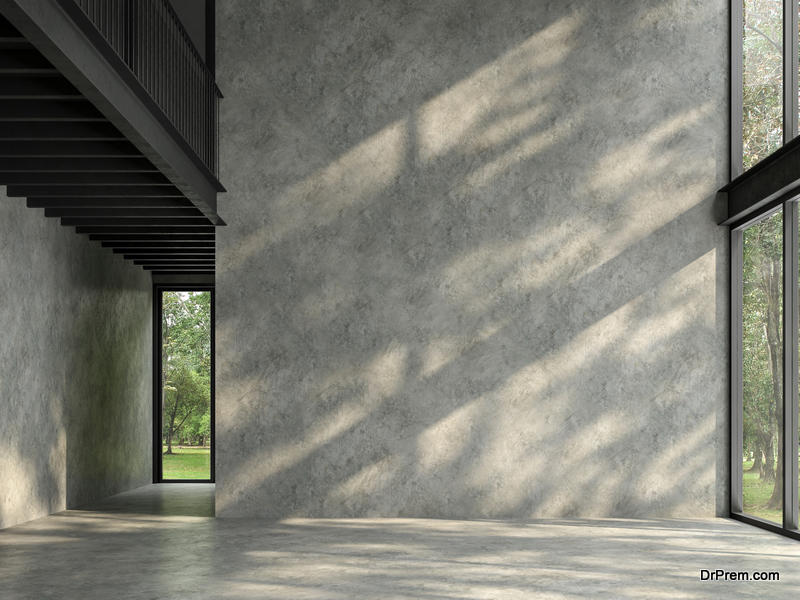After investing in a decorative floor, you want them to remain in their best shape. Both interior and exterior flooring needs constant upkeep. With indoor stamped concrete Indianapolis, maintenance is easy. An outdoor stamped overlay for a Sunshine-State-inspired pool possesses a beauty that lasts.
This is why many home and business space owners got a concrete love for this type of floors. They bear great value in both form and function. Whatever aesthetic appeal you want to achieve, you can have it.
The concrete floor is so adaptive to any design concept. It survives any type of weather too. It is perfect whenever you are in the city or in the state. Various concrete stamping ideas can be produced to match your exquisite taste.
The best thing about the concrete stamp techniques is keeping it is a breeze. Here are tricks for you today on how to maintain the concrete floors with stamped and overlay patterns.
1. Simply Sweep In & Out

Interior and exterior concrete only need simple sweeping to remove dust and other solid particles. Animal hairs, dried leaves, the debris of sands, and stone can go in and out of your homes. The stamped floors can be indoor or outdoor. A simple cleaning with a traditional broom or damp mop is what you only need. Do this regular cleaning. Make it a habit, and it will keep the floors in perfect appearance.
2. Resealing for Indoor or Outdoor
So, what might get you to follow the trend for installing concrete floorings is its economic benefits. It’s true! The floors are cost-efficient, providing low-cost maintenance. A repair seldom occurs.
When it comes to resealing, what you need to consider is how much foot-traffic the surfaces encountered. Interior concrete has light to low floor activities. You can reseal as the need arise. Usually, you’ll need it after a least five or even ten years.
For exterior flooring with stamped overlays resealing is recommended at least every three years. If the outdoor concrete is exposed to extreme weathering, resealing is a must. You might have it in your commercial area where vehicles also traffic. Or your location is prone to severe climate disturbances. Especially if winter is coming, you need to conduct resealing.
Perform resealing. Get it resealed by a concrete flooring expert. Its protective layer can prevent the floors from forming further damages.
3. Season of Snow Solutions

So, it is mentioned above that an exterior concrete is prone to outdoor damages. Winter is one of the most extreme weather out there. It is better to pay extra attention to that. Outdoor concrete exposed to snow takes more damages, as you can imagine.
Property owners usually use de-icers. De-icing salt is a standard solution for maintaining concrete during winter. But this is a common mistake. When choosing an anti-ice solution, what you need is the ones that use more natural ingredients.
Check for those that do not have ammonium compounds and nitrates. Avoid those. Also, avoid the ones with too much salt in it. Salt causes peeling and scaling on a concrete surface.
For making sure that ice will not damage the floors, thawing agents such as table-salt and sugar in simple water can help. De-icing salt has a specific use for safety, as explained by a helpful article by ScienceDirect.com. Anti-ice agents with potassium chloride solutions are also useful and less damaging if appropriately used.
4. Manage the Metals and other Chemicals
Keeping the concrete safe from sharped edge metals can do you right. It is merely managing the tools around your outdoor spaces, Even indoors, like your kitchen areas and garages.
Most of the time, it is due to the tiny things you neglect that cause big trouble. Have simple outdoor storage for keeping garden tools away. If your cars are often parked in the driveway, a regular check is what you have to do. Sometimes oils leak. Other times, the cars’ steel parts scrape on the surface. Again if winter is around the corner, metal objects can cause unforeseen scratches. These may be tiny flaws, but it can compromise the concrete’s polished quality.
You want to minimize flaws. It is how you keep concrete looks appealing. It’s flawlessly finished, always.
Article Submitted By Community Writer




